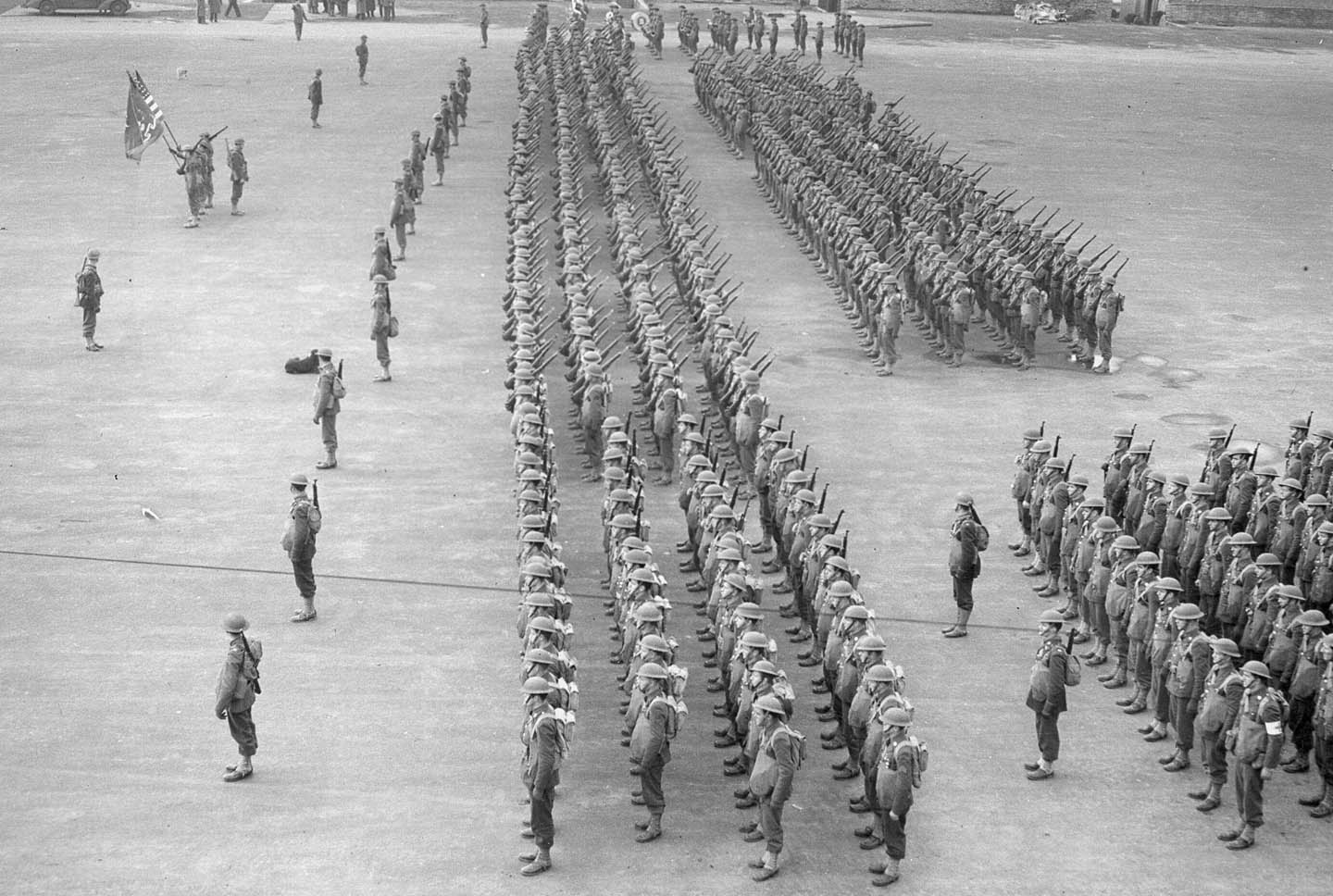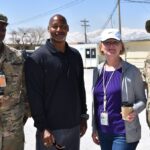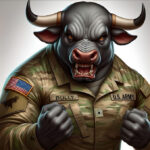
over the past four decades the Army has produced little innovation in its ability to rapidly expand the force
Portions of this essay are excepted from “The Total Army,” an Elihu Root Study by the 2016 Carlisle Scholars Program at the U.S. Army War College.
It is time for the Army to innovate in meeting the challenge of rapid expansion. Since the early 1980s, the U.S. Army has generally preferred to maintain a standing force that is ready for war, with little attention to improving its ability to expand rapidly. The era of the all-volunteer force has seen the emergence of tremendously capable Army units in times of peace, an anomaly in American history. Yet it has also seen the emergence of an odd dogma regarding Army expansion. Where prior generations of U.S. Army leaders were routinely expected to grow and deploy the Army over the course of months, the modern U.S. Army sees expansion as something requiring years. Indeed, listening to some Army leaders one gets the impression that rapid expansion is an unwanted ability, since it would give the congress justification to cut Army end-strength without incurring significant risk.
Whether or not this impression is accurate, over the past four decades the Army has produced little innovation in its ability to rapidly expand the force in new or augmented units, while over the same period it has made tremendous progress in how it trains established units. This lack of balance in innovation is a problem.
In military speak, “capability” refers to what a unit or system can do and how well it can do it, while “capacity” refers to how many units or systems are available (also referred to as “mass”). While military capability is doubtless important, one thing we know about war is that it has the power to surprise us in unpleasant ways. Nothing is more useful to surviving and overcoming those surprises than the simple power of numbers. Mass still matters, and the ability to produce it quickly deserves more of our attention.
Given sufficient time, the United States can produce unrivaled military capabilities and field an immense Army. The U.S. is a populous, technologically advanced nation with tremendous natural, scientific, and industrial resources. Few nations have a deeper reservoir of manpower. Given the ability to dictate the timing of all military operations, the United States would have the luxury of building military forces on demand and dissolving the military when not in use. But time passes no more slowly for Americans than it does for anybody else, and the U.S. tends to get involved in wars on relatively short notice. As General Robert Abrams observed, “Time is our biggest resource challenge when it comes to building and sustaining readiness.”
In light of this time constraint, the nation has two possible ways to field a military force in time for it to matter in a potential conflict: 1) maintaining a robust military with an appropriate breadth of capabilities (force-in-being) and 2) rapidly expanding a base force when needed (potential force). Our current preference is for option 1, but we need to do more to create a good option 2.
Rapid expansion is above all a training challenge. Training new soldiers requires facilities, equipment, and experienced soldiers that then are not available to house, equip, or populate existing, operational units. Maintaining a massive, under-used training base is therefore inefficient, from the perspective of current operations. But what if you can shorten the time it takes to transform a relatively new recruit into a soldier ready for deployment?
Accelerating training without sacrificing quality requires one (or a combination) of two things: (1) teaching people faster, or (2) starting with people who already have some training. Regarding the first possibility, recent years have produced significant technological advances that should cause us to question our assumptions about how long it takes to train someone to perform a complex, unfamiliar task. For example, augmented and virtual reality environments are already being used in industry and the U.S. military to streamline and accelerate training. Cuing systems like Google glass have been brought to factory floors, helping factory workers learn and execute complex assembly procedures more quickly and reliably. The applications of technology like this to preparing soldiers for combat are obvious, and deserve more attention.
The second way to accelerate training – starting with people who already have some key knowledge and skills – is the focus of the remainder of this essay. It relies less on neat gizmos and more on being creative about how we structure the Army and categorize personnel. Yet this is no less innovative than technological solutions.
If the Army has to expand rapidly, it will grow using personnel from one of three expansion pools: reservists no longer attached to reserve units (i.e., members of the Individual Ready Reserve, or IRR), volunteers, and conscripts. The quickest mobilization would come from the reserve, since it is comprised of pre-trained manpower. Thus, their learning curve should be much shorter. By comparison, volunteers and conscripts would likely take a longer time to move from initial military training through advanced individual training.
However, the U.S. Army’s experiences with limited expansion during the post-9/11 wars suggest that the IRR is less attractive as a source of expansion in practice than it is in theory. In Operation Enduring Freedom and Operation Iraqi Freedom, the Army accessed just four percent of IRR members. The IRR constitutes over 25% of the ready reserve, but the program appears moribund for every service but the Marine Corps. The Reserve Forces Policy Board has recommended much-needed changes to reinvigorate the IRR. However, the traditional constitution of the IRR (most of them mature members of the population with significant active duty experience) makes the IRR pool smaller and smaller in scale. (It is also problematic in terms of social justice – the unappealing prospect of involuntarily mobilizing a veteran father in his thirties versus training a conscript or volunteer, for example.) Given the decreasing size of the U.S. military and the pool of military veterans, IRR manpower is declining, as well. In 1985, the U.S. Army Reserve included over 300,000 IRR.[i] By 2009, the Army’s IRR pool had declined to just over 100,000.
Nevertheless, the core concept of the IRR remains compelling. Increasing the proportion of the service-eligible population that has some military experience can in theory dramatically increase the speed and predictability of expansion. Given the active Army’s decreasing end-strength and its increasingly constrained operational capacity, expansion capability is more valuable to the Army than it has been in decades. At a relatively low cost in money and force structure, a modification of the IRR can create valuable options for rapid expansion for the Army and for the nation.
There is no optimization function for building and retaining expansion capability. Several different approaches can work, but any expansion proposal for a nation with a volunteer military should seek to do four things:
1. Increase the proportion of the population that has served in the active Army without significantly affecting the total size of the standing force.
This is the concept of “shaping the pool” of human capital, reducing the time and investment required to bring some members to readiness for deployment in case of war-time expansion. The IRR is human capital of this type, but the program needs to be broadened and modified.
2. Retain more initial and advanced training capacity in the force structure than the Army needs given its existing structure, and utilize training force structure as much as possible absent expansion.
A small, all-volunteer Army in peacetime has a much lower throughput in basic and advanced individual training than an Army that is expanding to meet current operational demands. While expansion is difficult, expansion without force structure to meet surge training requirements is even harder. It is of course grossly inefficient to retain all of the training force structure that would be required in the worst-case scenario. Yet when the organization is no longer sized to support manpower-intensive operations (as in the case of the U.S. Army today) there is wisdom in cutting some operational structure now in order to preserve flexibility in force production later. This is similar to the small premium an investor may pay to purchase a call-option on a stock. Such a premium is a predictable expense, but if the stock exceeds the strike price, the option becomes very valuable. Force development capacity has option-like payouts in war-time.
3. Maintain force structure that can receive and lead expansion personnel.
Armies are led by senior NCOs and experienced officers. A surge in capacity is pointless if an Army lacks the people to lead expansion units or a force structure concept that can receive expansion personnel. In the earlier discussion of models for expansion, the costs and benefits of two generic approaches—splitting and cadre—were discussed. For an operationally stressed military facing urgent force requirements, the splitting approach is unattractive because it makes pre-existing, ready units unready for deployment after they divide. The cadre approach is therefore preferable.
A surge in capacity is pointless if an Army lacks the people to lead expansion units or a force structure concept that can receive expansion personnel
With respect to retaining excess training force structure and creating receiving unit force structure, an enduring challenge in maintaining structure for expansion is that bored soldiers are often demoralized soldiers. As General Hamilton Howze observed (based on his own experience leading a post-World War II unit), “There is no more stultifying, uninspiring, depressing, and seemingly useless activity than that of serving in an under-strength military unit.” This is the “hollow force” problem. However, a unit that is under-strength for one mission is not necessarily under-strength for other missions. Which leads to the final desired characteristic of an expansion concept.
4. Force structure retained for potential expansion should be used for meeting peace-time military requirements wherever possible.
To quote Tennyson, “How dull it is to pause, to make an end, / To rust unburnish’d, not to shine in use!” Military units “shine in use.” Most military officers view cadre units with suspicion, but a cadre unit that is capable of doing valuable work will not necessarily suffer the fate described by General Howze in the above-mentioned quote. On this point, the Army has made progress in recent years, created Security Force Assistance Brigades (SFAB) that are essentially undermanned maneuver brigades with the ability to satisfy a crucial, current mission of the U.S. military – in this case, training, advising, and assisting allied forces.
The Modified Individual Ready Reserve
With these four attributes in mind, consider one approach that satisfies these requirements. With the Modified Individual Ready Reserve (MIRR), the Army brings in a certain number (to be determined through the force planning process) of new recruits annually whose active-duty commitment is for just 12-13 months. Following that year, they become members of the MIRR, and return to civilian pursuits. However, they remain in the MIRR for an extended period (ten years, for example) and during that period they are required to remain physically fit for service and to maintain core military proficiency through a combination of annual training at a military facility and, where suitable, regular classroom training through distance learning. As an additional incentive to serve, all MIRR personnel would receive some compensation, such as a small stipend, college tuition assistance, or medical insurance.
The MIRR is a hybrid of the mandatory military service traditions of nations like Israel, in which a year of military service often follows high school or college graduation, and the original concept of the Individual Ready Reserve of the all-volunteer force.
The MIRR would significantly increase the pool of national manpower with some prior military service. In the event that a rapid expansion of the Army is required to support a prolonged, manpower intensive operation that does not rise to the level of a complete strategic mobilization, the MIRR, properly managed, would provide force planners with a more reliable source of personnel in developing force availability predictions. Additionally, the MIRR creates a higher training-to-service-time ratio for the training base. In order to support the higher through-put in basic training and advanced individual training, the Army would increase training force structure to accommodate MIRR training.
Finally, MIRR personnel would be designed to be received by cadre personnel who serve in under-strength units in the Army, such as Security Force Assistance Brigades. The integration of MIRR personnel into such units satisfies both the third and fourth requirements discussed above: retaining expansion leadership and force structure, while using that force structure to meet current requirements, absent expansion.
The ability of a society to produce military forces more cheaply and quickly than its adversaries is an important aspect of strategy in war that has become all too obscure in American military thought. This is a pity, because in many respects the quick production of military force (usually infantry of some kind) is the oldest, simplest, and most reliable of all military strategies. The technological environment has changed dramatically in recent decades, and technology can help us train soldiers more rapidly and effectively than ever before.
Paul Larson is a colonel in the U.S. Army and a graduate of the U.S. Army War College resident class of 2016. Andrew A. Hill is the Chair of Strategic Leadership at the U.S. Army War College. The views expressed in this article are those of the authors and do not necessarily reflect those of the U.S. Army War College, U.S. Army, or Department of Defense.
Photo: The 34th Infantry Division — composed of National Guard troops — forms up on the Camp Claiborne, La., parade ground, circa 1941, to participate in Louisiana Maneuver training. The division was the first large-scale U.S. military unit to be sent to Europe, arriving Jan. 26, 1942, in Belfast, Northern Ireland.
Photo Credit: Library of Congress photo, public domain





MIRR is what the current Guard and Reserve formations do. The only substantial differrence is the notion that 12-13 months of training at the front along with longer commitment time of 10 years vs 8 years.
The burden for maintaining the “go time” readiness of this structure is under analyzed. This individual readiness burden actively saps the Guard and Reserve right now.
Instead focus on the assumptions of minimum full time manning per soldier in the existing citizen soldier formations. USAR operates at 7% of total force in an AGR status and the Guard around 12%. With the individual readiness witch hunts, this is insufficient for the current formation in my informed opinion. Numerous small formations have 0 FTE if they are under 25 personnel.
What is the standard path trainup time for 25S or 35S soldiers? If they spend 28-50+ months in the TRADOC path, what unit could advance them to a qualified training individual level? What unit would be able to absorb TRADOC trained, but uncertified soldiers while maintaining a CTC or deployment readiness training?
Good concept to expand the available IRR pool, but that formation is not the same pool your mental model thinks it is.
v/r
Nathan
There is also the concept of increasing the training capacity through use of Reserve forces. There are Reserve One Station Unit Training (OSUT) cadre drill sergeant companies and battalions. I don’t know if they are still managed this way, but in 2003, there was a Training Base Expansion 1, 2 and 3 for differing scale of call ups to have this Reserve training force either replace or augment Active Component trainers for basic training and then through Military Occupational Specialty (MOS) training as well. This helps quickly scale/surge the development of soldiers trained at that initial level of proficiency- “basically” trained troops.